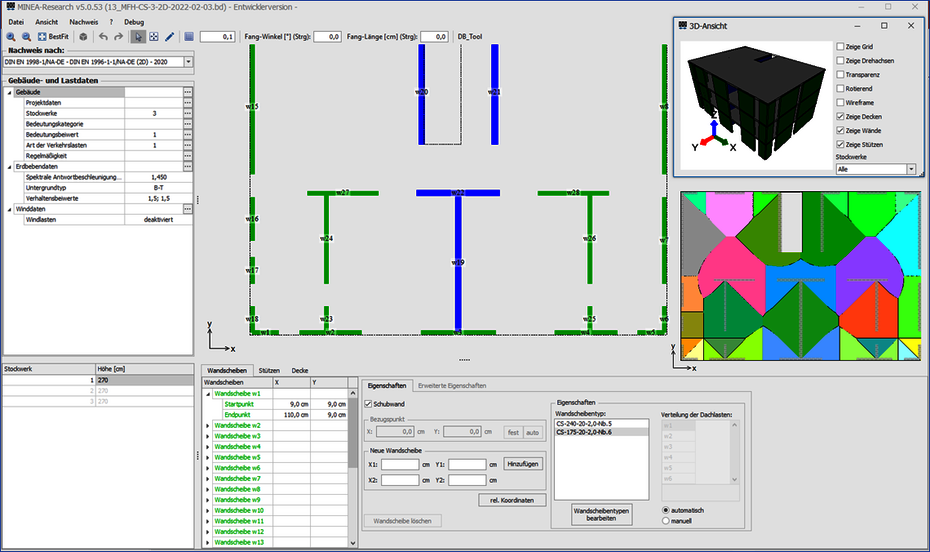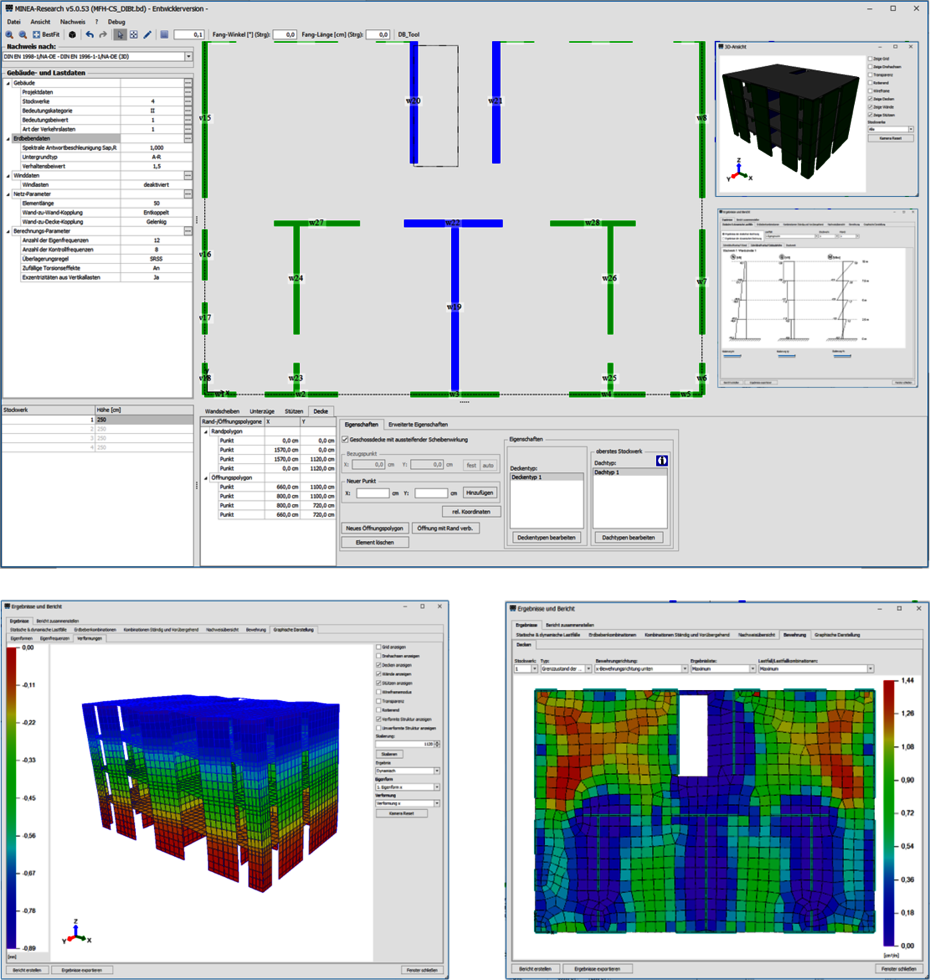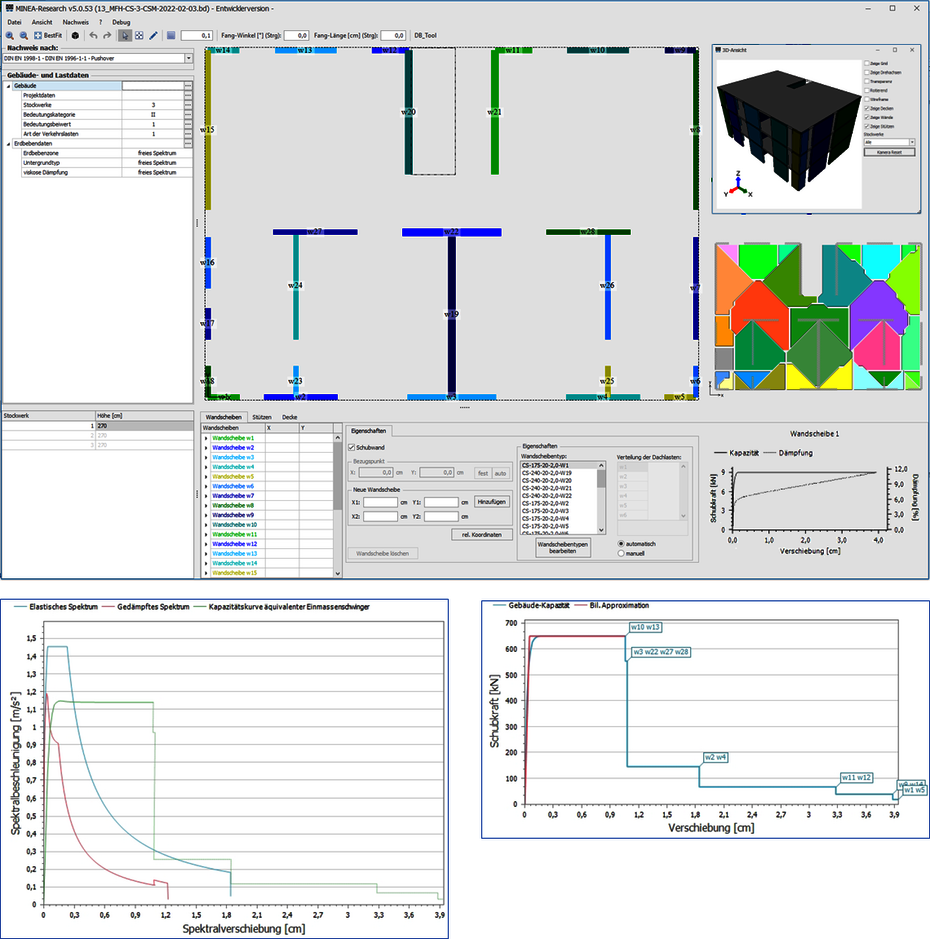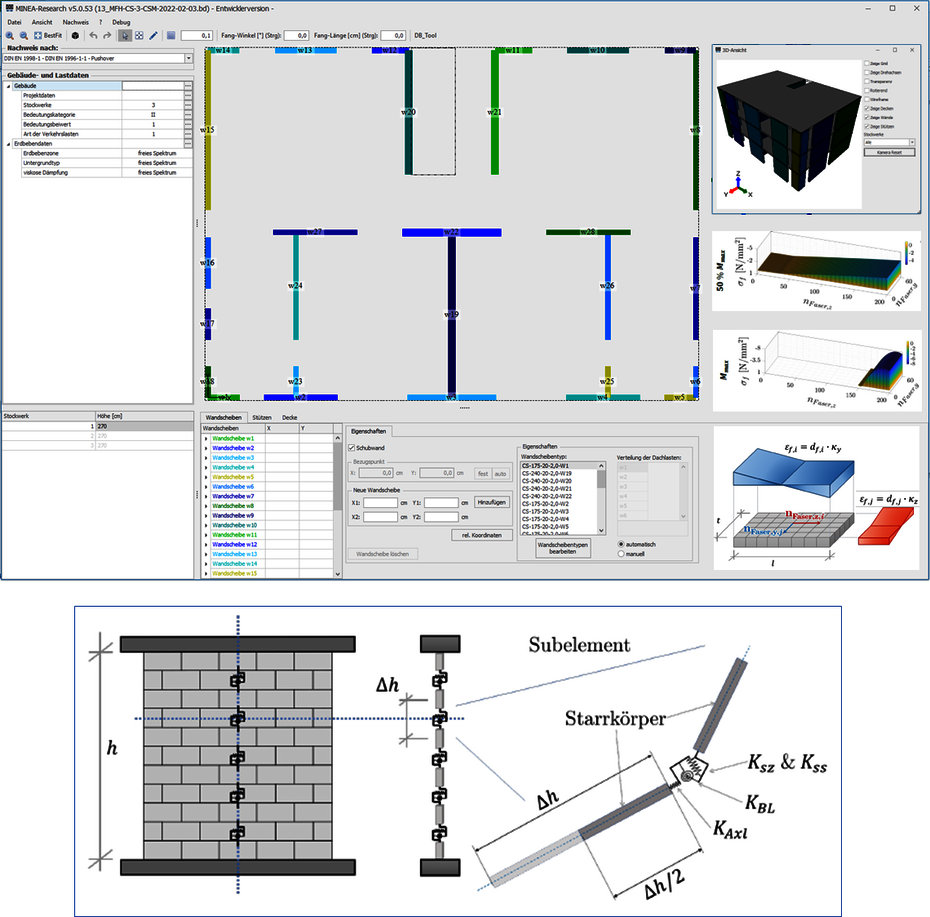Linear Calculation Models
2D Calculation Model
For regular buildings with continuous shear walls, linear 2D calculation models can be used in which the vertical loads are distributed to columns and walls with tributary areas. The horizontal loads from earthquake, wind and inclination are distributed to the shear walls according to their stiffnesses and with consideration of torsional effects. The calculation for the seismic load case is carried out with the simplified response spectrum method on the basis of a multi degree of freedom mass system representing the masses and stiffnesses of the building. Due to the regularity, only the first bending mode is taken into account. If framing effects are considered, the additional loads are considered in to design of the reinforced concrete slabs.

3D Calculation Model
For buildings with irregularities in plan and elevation, linear 3D calculation models based on the finite element method can be applied. The modelling is carried out with shell elements for slabs and walls, columns are represented by beam elements. The model is generated automatically based on the geometry and material properties of the building without additional work load for the structural engineer in comparison to the 2D calculation model. The calculation for the seismic load case is carried out with the multimodal response spectrum method, taking into account the decisive vibration modes. The design of the walls is carried out with resulting internal forces, which are calculated by the integration of the shell internal forces. The design of the reinforced concrete slabs is carried out automatically with the internal force variables in the slab.

Nonlinear Calculation Models
2D Calculation Model
For regular buildings with continuous shear walls, nonlinear 2D calculation models can be used for the seismic load case, in which the vertical loads are distributed to columns and walls with tributary areas. With the vertical loads, the nonlinear load-deformation curves of the single walls on the ground floor are calculated. The total capacity of the building is calculated with a pushover analysis, taking into account torsional effects for the decisive ground floor. The verification is carried out by determining the intersection point of the capacity curve of the ground floor and the damped or inelastic response spectrum. Due to the regularity, only the first bending eigenmode is considered, taking into account only the nonlinearities in the ground floor. If framing effects are considered, the reinforced concrete floors are designed for the resulting additional loads.

3D Calculation Model
For buildings with irregularities in plan or elevation, nonlinear 3D calculation models based on the finite element method can be used. The modelling is carried out with linear shell elements for slabs and columns are modelled with linear beam elements. The walls are modelled with nonlinear macro elements, which are coupled to the slabs with nonlinear springs. The model is generated automatically in the background, so that there is no additional work for the structural engineer compared to the 2D calculation model. The total capacity of the building is calculated with a global pushover analysis, taking into account the nonlinearities in the single walls and torsional effects for the entire building. The verification is done by determining the intersection point of the capacity curve of the building and the damped or inelastic response spectrum. The load distributions of the decisive eigenmodes are taken into account and combined with adaptive-multimodal pushover analysis. The design of the reinforced concrete slabs is carried out automatically with the internal force variables in the slab.



